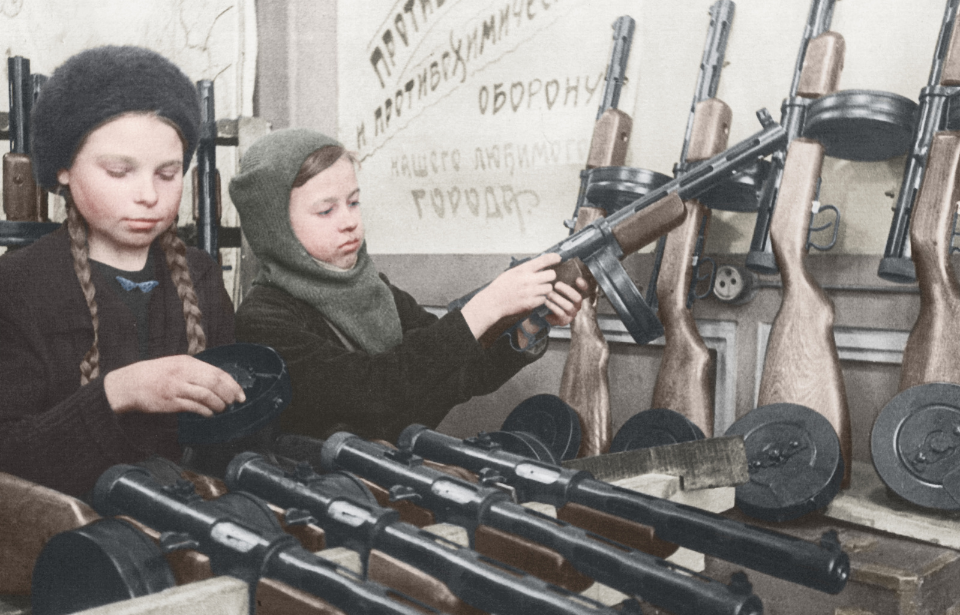The Siege of Leningrad, a devastating 872-day blockade of the Soviet city by the Germans during World War II, remains a horrific part of the fighting on the Eastern Front. The city’s resilience in the face of bombardments, starvation and sub-zero temperatures is an inspiring tale of human endurance. Amid the horrors of war, it fell upon everyday citizens to take up the mantle and defend their city. Among the unlikely heroes to emerge in Leningrad were blind citizens and children.
The above photo shows two Soviet girls assembling PPD-40 submachine guns during the Siege of Leningrad, sometime in 1943. While it might have been common for Allied women to take on munitions work, it was certainly uncommon for children to do so – and, yet, the Soviets were left with little choice.
Leningrad was crucial to weapons manufacturing for the Red Army; when the Second World War broke out in 1939, 11 percent of the country’s industry was located in the city. Although around 840 factories were destroyed by the end of the siege, these crucial supplies continued to come off the line.
While some men remained, these factories were dominated by the women and children who took over much of the work. One citizen remembered, “I will never forget what I saw at the Kirov factory. […] By chance I ran into the factory. I saw teenagers, 12 or 13-year-old boys, 14-year-old girls working at the machines.” This was far from the only role children held. As one of them explained, “We were not children, but tiny old men and women. We played at war and at being nurses.”
The Germans began their invasion of the USSR with Operation Barbarossa on June 22, 1941. Only a week later, the Soviets began evacuating their most vulnerable citizens, primarily women and children. This first wave of evacuees consisted of 336,000 people. This wasn’t the entirety of the child-aged population, leaving those who remained to take on defensive tasks.
Many of the children left in Leningrad worked in factories, with others taking on more direct combat roles – in fact, volunteer militia brigades were primarily made up of women and children. As early as September 1941, these youngsters directly defended their city. The Germans were only 10 km away, and the children were among those who went to the frontlines to stop them.
In 1942, tens of thousands of children made the decision to join the night watch and helped put out fires caused by German air raids on Leningrad. This was dangerous work, and many of them died in the process. One survivor, Tamara Chernykh, was four years old during the winter of 1941-42. She recalled that her 12-year-old brother was one of those to extinguish the firebombs dropped on the city.
For their bravery during the Siege of Leningrad, 15,000 children were awarded military medals. Nonetheless, the fighting took a heavy toll on these innocents. Thousands perished due to starvation, disease and bombings. Even those who were evacuated often died when enemy attacks hit them before they made it to safety.
More from us: From Baracks to Ballgowns: Drag Performances Helped Boost Morale in World War II
As the siege lifted on January 27, 1944, the world witnessed the true extent of the suffering endured by the children and older citizens of Leningrad.
